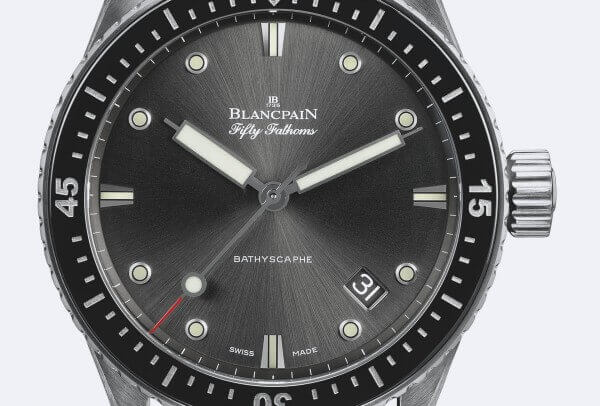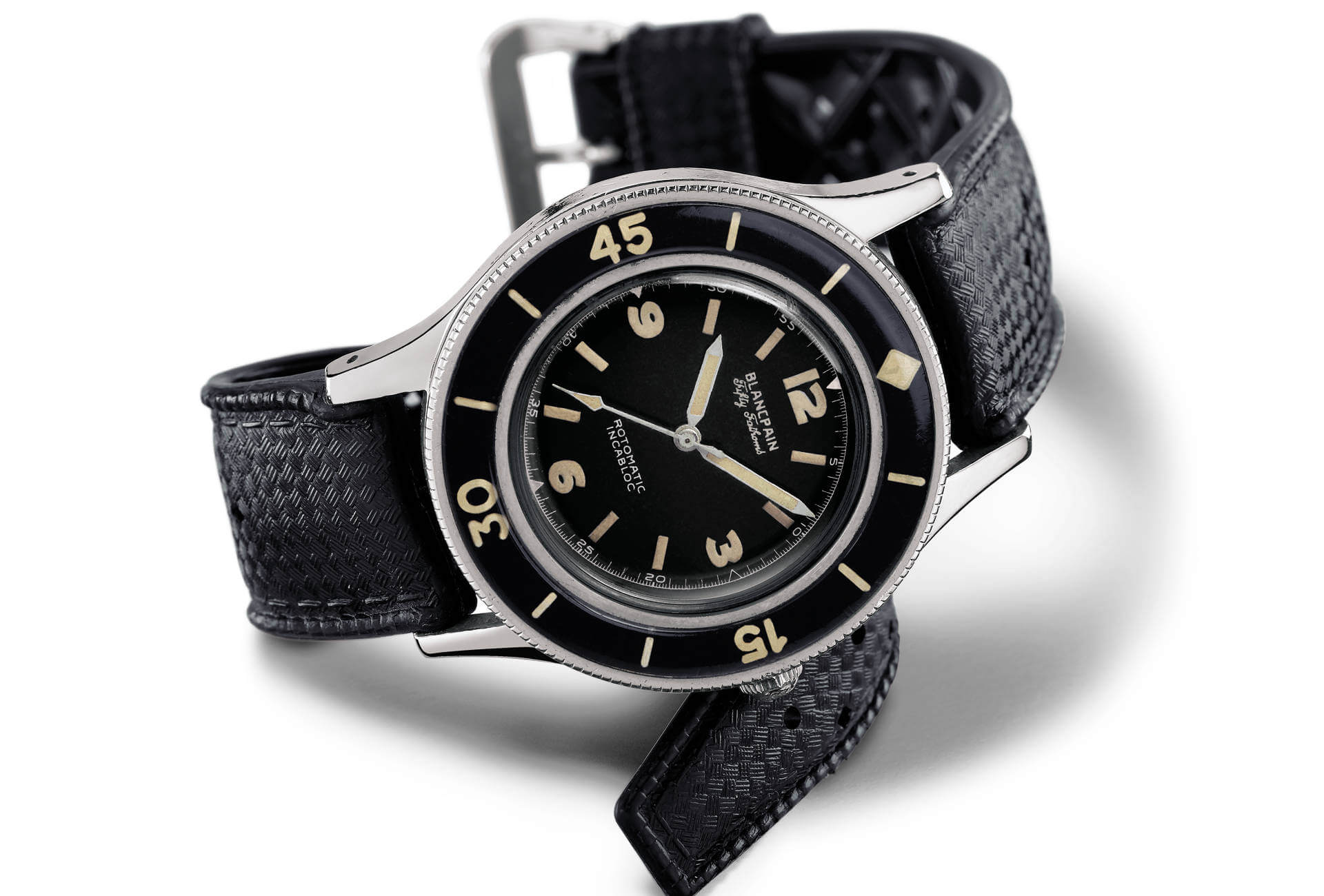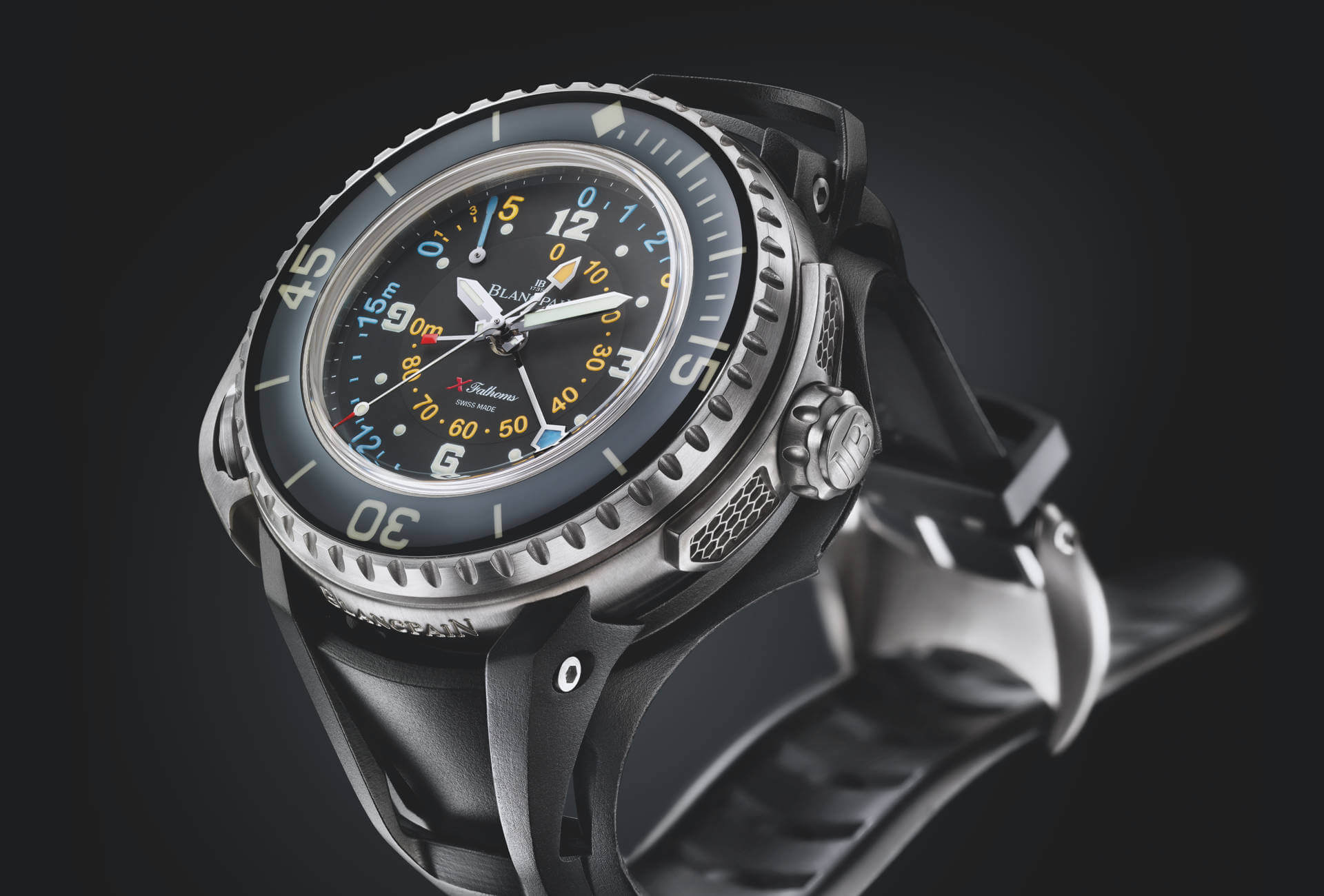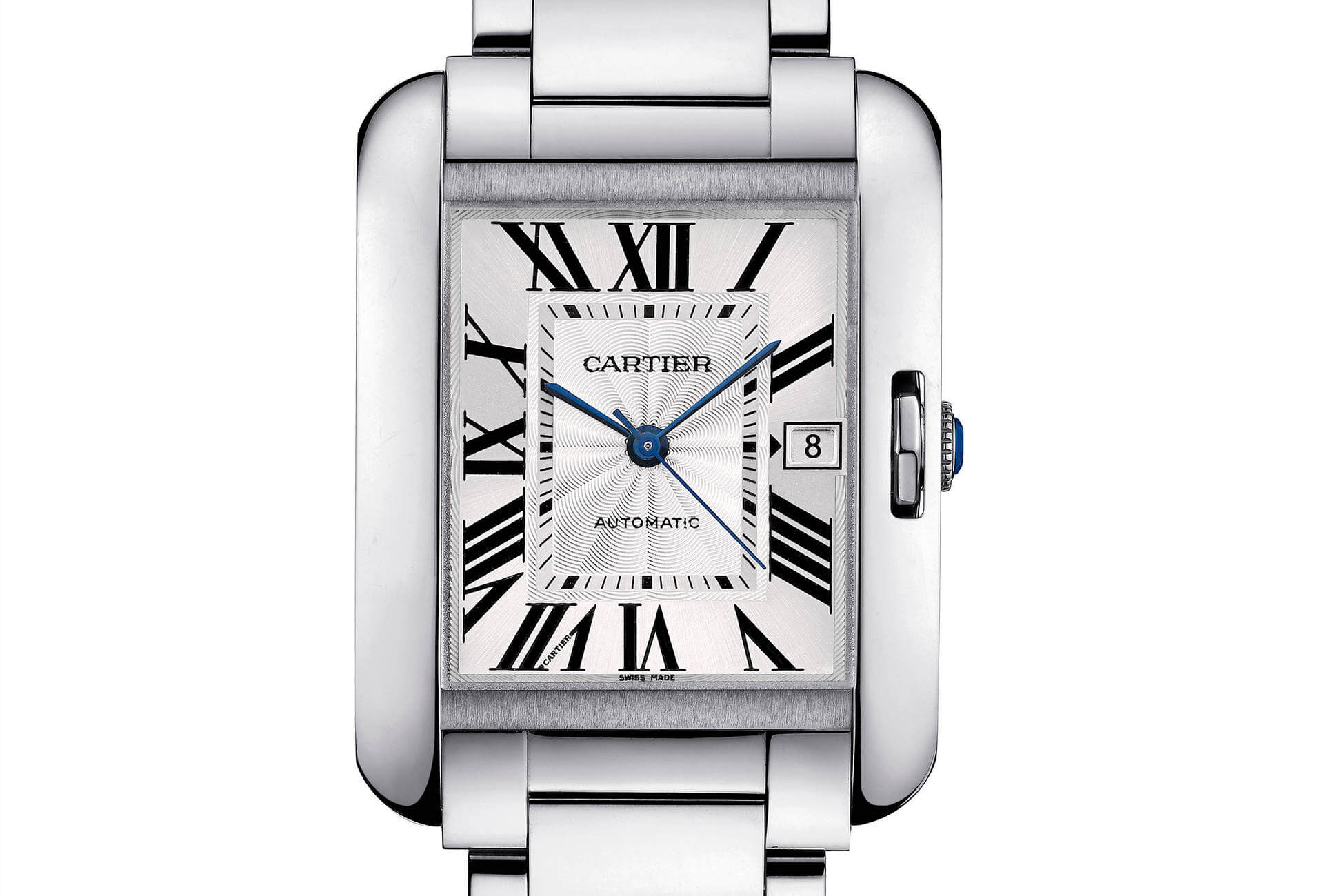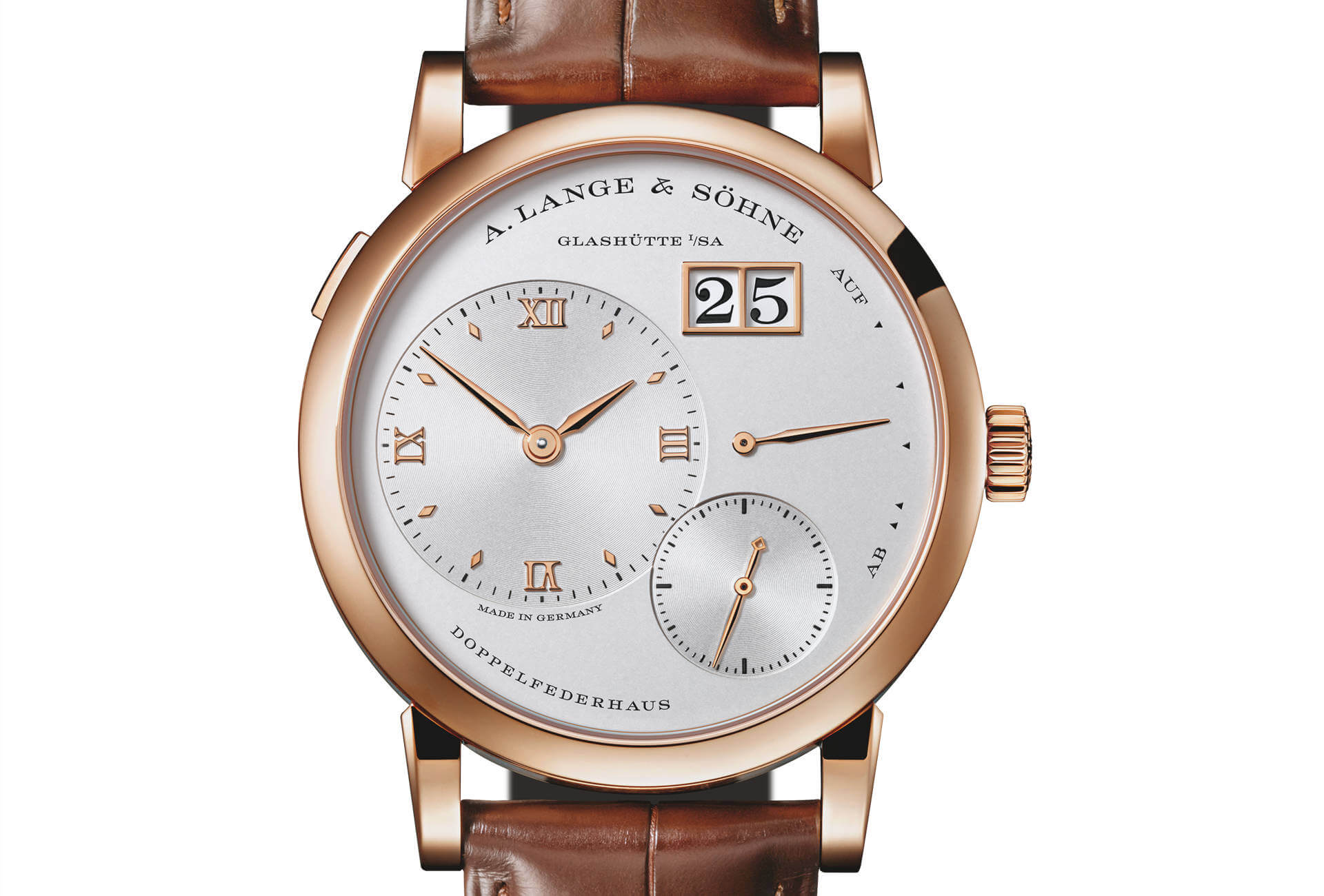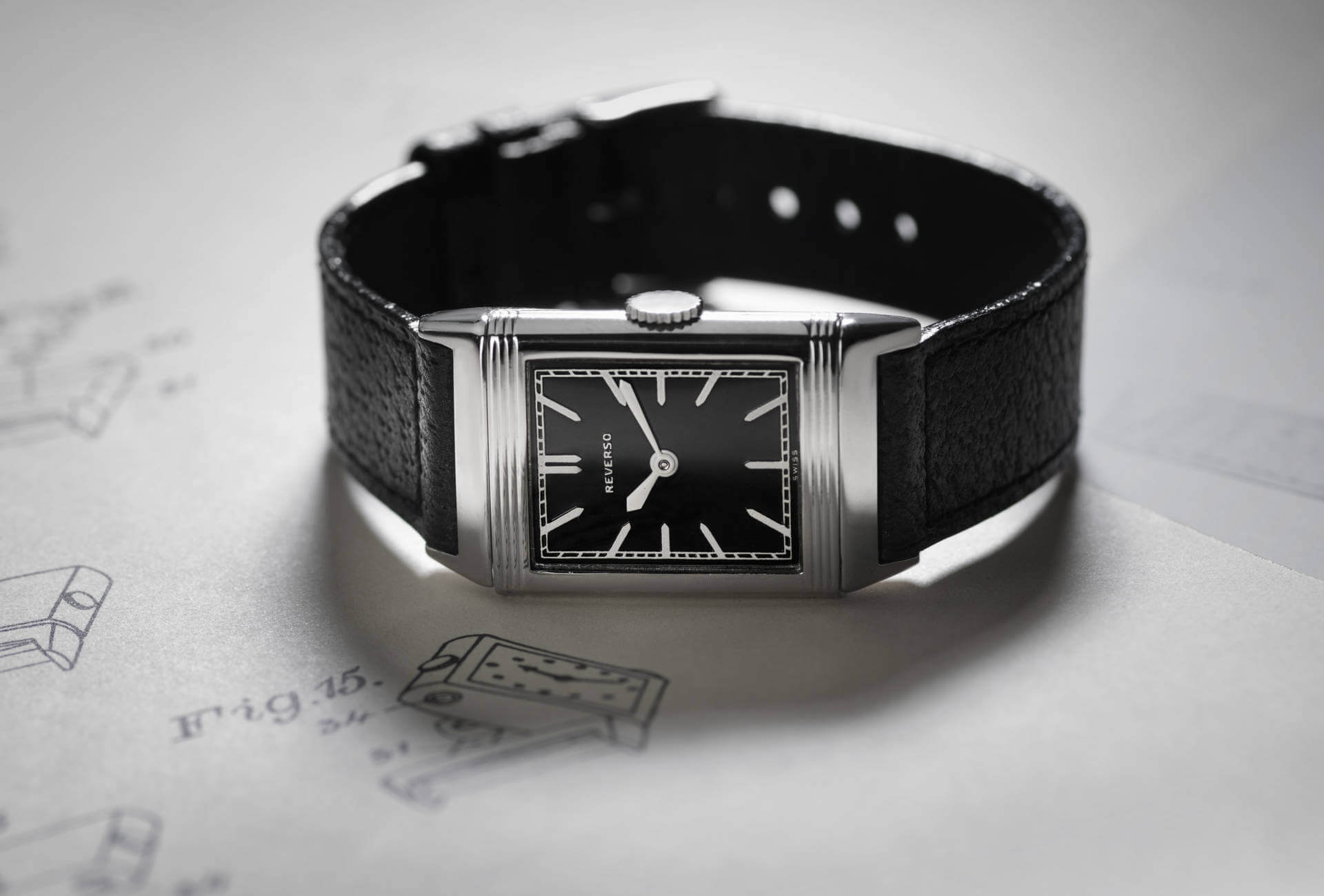Three men helped bring the Fifty Fathoms to life, in 1953. One was Jean-Jacques Fiechter, CEO of Blancpain in Switzerland and one of the first amateur divers. During an outing at 50 metres, he lost all notion of time. This can have fatal consequences for a diver, and prompted Fiechter to start working on a reliable timing instrument. Meanwhile, Captain Robert “Bob” Maloubier and Lieutenant Claude Riffaud were setting up an elite unit of combat divers for the French military. Having failed to source a watch that met their requirements, they drew up their own list of specifications and set about finding a manufacturer. Responses, however, were less than enthusiastic – most firms could see no future for such a watch – until Jean Vilarem, manager of Spirotechnique which supplied the French navy with diving equipment, put them in touch with Jean-Jacques Fiechter.
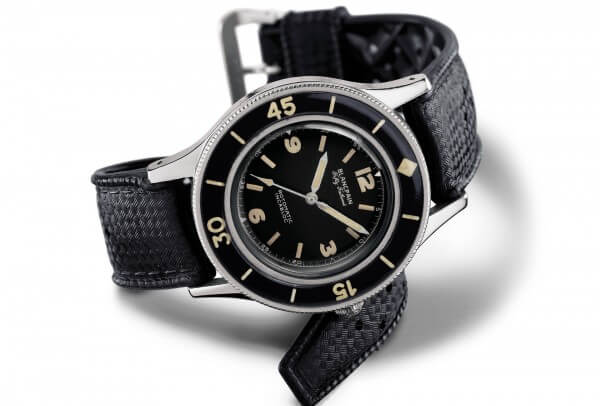
That the trio should get along was a foregone conclusion; together they decided to create the instrument Bob Maloubier described as “a watch with a black dial, bold large numerals and clear markings: triangles, circles, squares.” It was also to have “a rotatable exterior bezel which repeated the markings of the dial” that would display remaining dive time. It was decided to give this new instrument a larger case than was usual at that time (41 mm diameter), luminescent hands and markers that could be easily read in low light conditions, an automatic movement so as to reduce wear on the crown, an inner cage to protect against magnetic fields and, of course, a water-resistant case. Jean-Jacques Fiechter filed three patents, for the double-sealed crown, the O-ring system on the case back, and the locking bezel. As it turned out, this 1953 dive watch complied with virtually all the criteria that the NIHS 92-11 (ISO 6425) dive-watch standard would introduce in 1996, forty years later!
The historic Fifty Fathoms
This pioneering timepiece was named the Fifty Fathoms after the British measurement of 50 fathoms (approximately 91.5 metres), which was considered the maximum depth a diver could reach at that time. The name further appealed to Fiechter as it reminded him of Ariel’s Song in Shakespeare’s The Tempest: “Full fathom five thy father lies, Of his bones are coral made.” Originally designed for French military divers, the Fifty Fathoms was chosen by Navies around the world, taking different names to comply with national legislation. In France, for example, it was known as the Aqualung, a brand belonging to Spirotechnique. The Americans referred to it as the Tornek-Rayville — Tornek, after the American distributor and Rayville as a phonetic anagram of Villeret, Blancpain’s village — and further labelled Mil-Spec, short for military specifications.
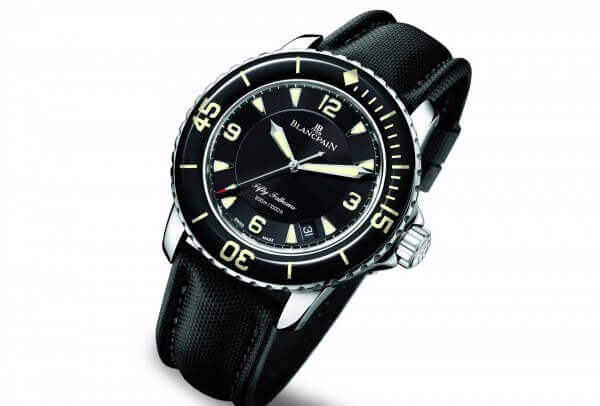
Other Fifty Fathoms were issued for civilian divers. As the Aqualung, it was memorably worn by Captain Jacques-Yves Cousteau during the dives that form the narrative of The Silent World, winner of the Palme d’Or at the Cannes Film Festival in 1956 and an Oscar the following year.
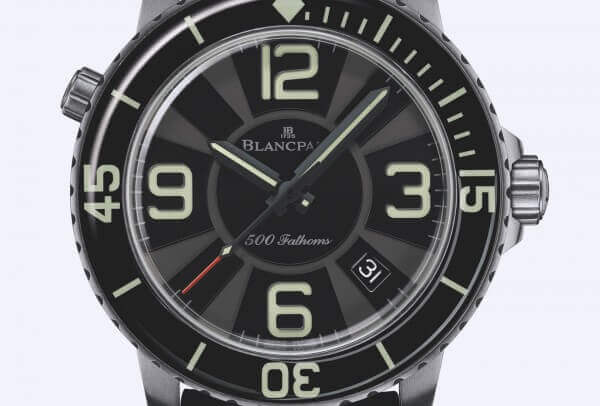
During Jean-Jacques Fiechter’s thirty-year tenure at the head of Blancpain, the Fifty Fathoms lent itself to numerous variations and introduced several specific features. One of the earliest of these was the humidity indicator, a small circle that went from blue to pink if water penetrated the case. In the 1950s, civilian models were distinguished from military models by not using radioactive coatings, a fact shown by a crossed-out radioactive symbol on the dial. After some considerable thought, Fiechter decided to add a date aperture; he knew this was of no interest to divers but ultimately chose it as a useful function on dry land (such a question would never arise these days, now that dive watches are worn as sport watches in all circumstances).
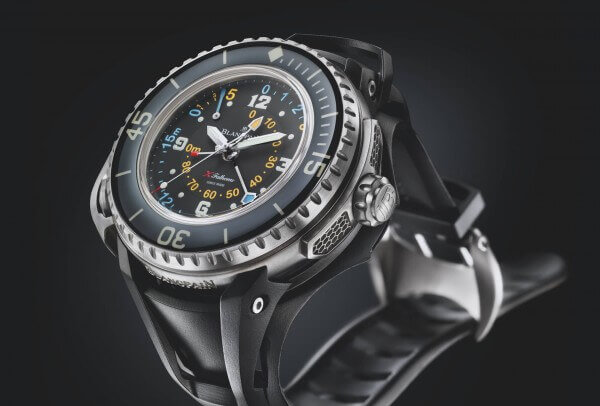
Fifty Fathoms for the 21st century
Blancpain updated the Fifty Fathoms collection in 2007 with three contemporary models: an automatic with date and five-day power reserve, a flyback chronograph that can be used underwater, and a flying tourbillon with an eight-day power reserve. All have a 45-mm case that is water-resistant to 300-metres – standard since 2003 – and crown guards. Released in 2009, the 500 Fathoms with helium escape valve further increased water-resistance to 1,000 metres. It was followed, in 2011, by the X Fathoms which incorporated the world’s first high-performance mechanical depth gauge. The first women’s styles were introduced to the collection in 2008, alongside a rare interpretation with flyback chronograph, complete calendar and moon phases, in 2010. A complementary range with both women’s and men’s styles was introduced in 2013. The more urban Fifty Fathoms Bathyscaphe takes the name and characteristics of a 1956 model, which referenced Auguste Piccard’s submersible vessel.
